#lunar landing module
Explore tagged Tumblr posts
Text
Crew of Apollo 14 (1971)
From top to bottom: Edgar Mitchell, Stuart Roosa, Alan Shepard

#astronauts#apollo space program#alan shepard#edgar mitchell#Stuart roosa#lunar landing module#moon landing#NASA
133 notes
·
View notes
Text

Buzz Aldrin - July 20th, 1969
#NASA#Apollo 11#Moon mission#Moon landing#Moon#Lunar module#Eagle#spaceflight#Astronaut#lunar landing#EVA 1#Buzz Aldrin#History
182 notes
·
View notes
Text

"LUNAR LANDING - ART CONCEPT
Artist's concept depicting the firing of the Apollo 10 Lunar Module descent engine for 42 seconds to propel 'Snoopy' back into a higher lunar orbit for rendezvous and docking with the Command and Service Modules. Earlier, the LM descent engine will be fired for 27 seconds to take astronauts Thomas P. Stafford, Apollo 10 commander; and Eugene A. Cernan, lunar module pilot, to within 10 miles of the moon's surface. Astronauts John W. Young, command module pilot, will remain in the Command Module, 'Charlie Brown,' in lunar orbit. Developed by TRW's Systems Group at Redondo Beach, California, under Grumman subcontract, the throttleable descent engine will be used to soft land the LM on the lunar surface during Apollo 11 and subsequent Apollo missions."
Date: May 12, 1969
NASA ID: S69-33765
#Apollo 10#Lunar Module#LM-4#Snoopy#NASA#Apollo Program#F-type mission#Moon#Moon Landing#May#1969#my post
46 notes
·
View notes
Text
GETTING TO THE MOON

On the Apollo missions, the lunar module was in a compartment stage beneath the command module engines. Once the ship had reached a certain distance, that stage would separate and free the lunar module.

The command module would then dock with the lunar module. The spacecraft then continued on to lunar orbit in thesis configuration.
Upon arrival at the separation point, two astronauts would crawl through a pressurized tunnel from the command module into the lunar module. The third astronaut remained in the command module, orbiting above the moon.

The lunar module then separated and proceeded to its landing point. The lunar module (or LEM - Lunar Excursion Module, as it was referred to at this point) became home for the two astronauts during their brief stay on the moon.
-Apollo 11 stayed 21 hrs 36 mins
-Apollo 12 stayed 31.6 hrs
-Apollo 13 never landed
-Apollo 14 stayed 33 hrs
-Apollo 15 stayed 67 hrs
-Apollo 16 stayed 71 hrs
-Apollo 17 (the last men on the Moon) stayed just seconds shy of 75 hrs.

For departure the top half of the LEM, or ascent stage, would fire its rockets and ascend into lunar orbit to rendezvous with the command module. The descent stage was left behind on the lunar surface.
Once the ascent stage had docked with the command module the astronauts would transfer back. The ascent stage was then jettisoned, and all three astronauts rode the command module back to Earth to splashdown somewhere in the ocean.
Just a reminder of what REAL astronauts experienced back in the day. Meanwhile, in present times, everyone seems to be going ga-ga over a bunch of celebrities who central high and experienced a brief moment of zero-G.
#Apollo#command module#lunar module#LEM#Lunar Excursion Module#moon landing#it's real!#NASA#space travel#real space travel
9 notes
·
View notes
Text
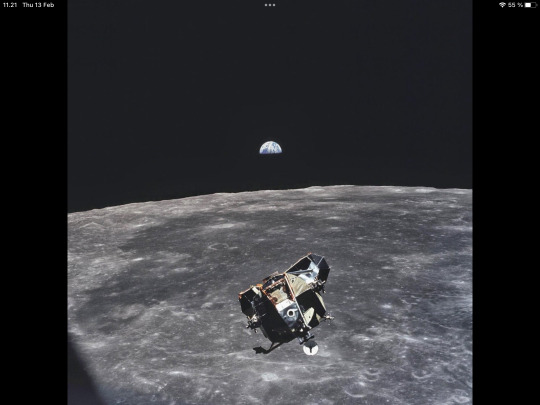
All of humanity in one photo (Except of the photographer, Michael Collins)
#apollo 11#michael collins#luner module#buzz aldrin#neil armstrong#1969#man on the moon#moon landing#humanity#space photography#space program#nasa#lunar lander#eagle#the eagle has landed
7 notes
·
View notes
Text

When North American Rockwell builds a spacecraft, North American Rockwell builds a spacecraft.
#vintage advertising#north american rockwell#nasa#apollo#spacecraft#apollo command module#apollo service module#saturn rocket#rockets#lunar module#moon landing#the 60s#engineering#rocketdyne
62 notes
·
View notes
Text

Commander Neil Armstrong and lunar module pilot Buzz Aldrin landed the Apollo Lunar Module Eagle on July 20, 1969, at 20:17 UTC, and Armstrong became the first person to step onto the Moon's surface six hours and 39 minutes later, on July 21 at 02:56 UTC. Aldrin joined him 19 minutes later, and they spent about two and a quarter hours together exploring the site they had named Tranquility Base upon landing.
13 notes
·
View notes
Text
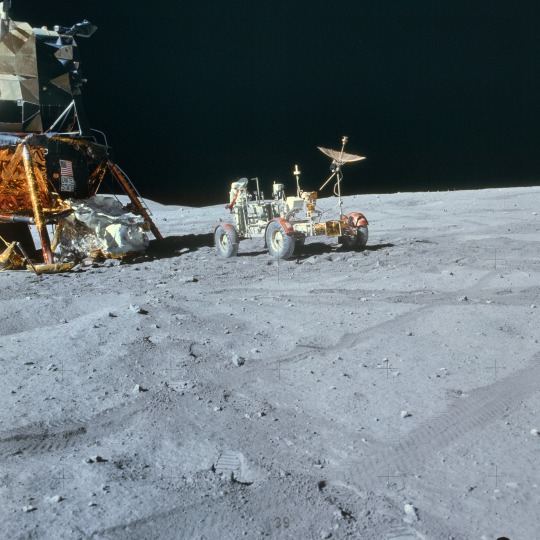
Parked by the front door. The Lunar Rover sits by Orion, the Lunar Module during Apollo 16, Apr 1972. The crew of John Young, Charlie Duke & Ken Mattingly experienced many glitches on the way to the moon culminating in concerns in the main engine. Mission Control had considered aborted the entire landing until it was decided the issues could be overcome. Still, as a result of these concerns, the mission ended 1 day earlier than planned.
#astronauts#apollo 16#space travel#astronaut#space exploration#nasa#space race#space#vintage space#moon landing#space age#1972#lunar rover#man on the moon#moon landings#1970s#lunar module#lunar surface#the moon#nasa astronauts#nasa photos#outer space#space history#space program
44 notes
·
View notes
Text
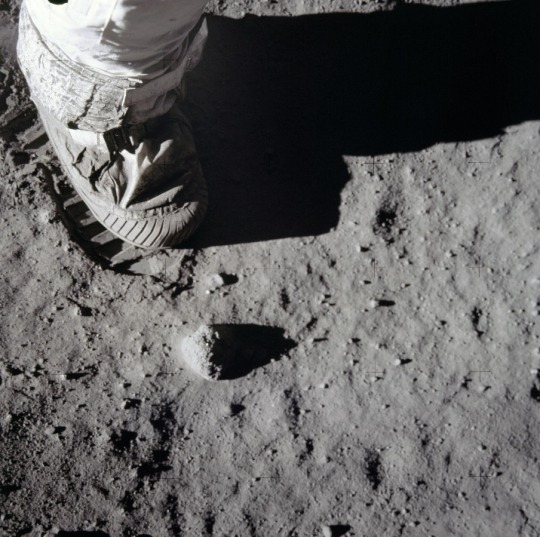
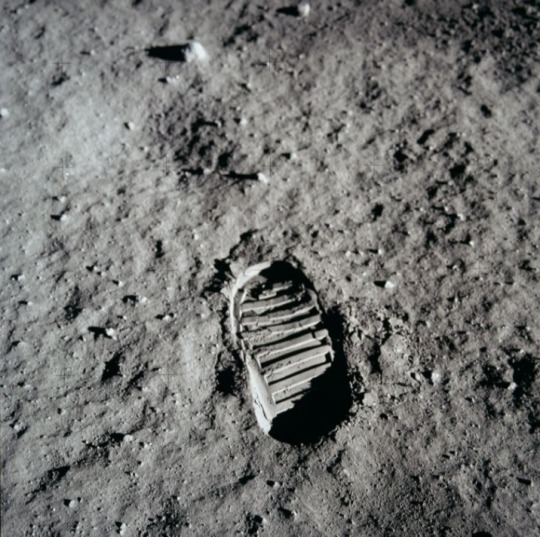
One small step. 🌑
On 20 July 1969 (54 years ago), Apollo 11 crewmembers became the first human beings to set foot on the lunar surface.
Today, we’re building on the legacy of Apollo as we prepare to establish a long-term human infrastructure on the Moon with Artemis.
— NASA
#International Moon Day#Artemis#Lunar Module 54#Neil Armstrong#Buzz Aldrin#Michael Collins#NASA#astronauts#space#space exploration#space mission#Eagle#moon#Apollo#moon landing
68 notes
·
View notes
Video
Descent to Fra Mauro by NASA on The Commons Via Flickr: This North American Rockwell artist's concept depicts the Apollo 13 Lunar Module (LM) descending to the Fra Mauro landing site as the Command and Service Module (CSM) remains in lunar orbit. Astronaut Thomas K. Mattingly II, the command module pilot, was to photograph the LM's descent from the CSM. For what was to be NASA's third lunar landing mission, astronauts James A. Lovell Jr., commander, and Fred W. Haise Jr., lunar module pilot, were to descend in the LM to explore the Moon. Mattingly was bumped from the crew three days before launch after being exposed to German measles, with backup command module pilot John "Jack" Swigert taking his place. Apollo 13 launched on April 11, 1970, with little fanfare. But two days into the mission, an oxygen tank onboard exploded, transforming Apollo 13 into a tense rescue mission that hinged on the ingenuity and grit of the crew, mission control, and NASA engineers. NASA Media Usage Guidelines Credit: NASA Image Number: S70-31898 Date: March 20, 1970
#artwork#artist depiction#artist conception#Moon#Moon Landing#Fra Mauro#Command Module#Lunar Module#apollo 13#Lunar Landing#painting#flickr#Mecha#Spacecraft#NASA
6 notes
·
View notes
Video
fut-lnr_v_bw_o_n (ca. 1961, unnumbered press photo) by Mike Acs Via Flickr: “Wonders of the Universe: Scientists ‘Tailoring…?’ Within the next 12 months, either a Project Mercury astronaut or his Russian counterpart will be orbiting the earth. Yet, even at this late date, no suitable space suit has been developed which would permit the astronaut to move freely into the hostile environment of space outside the satellite or around on the lunar surface. While in the past, the problem of designing an acceptable space suit was not considered difficult, as the time approaches when the suit should become operational it no longer appears an easy task. To point up the difficulty of this problem, at least three companies are engaged actively in trying to design a suit to cope with space conditions.” At this point, unfortunately, the affixed newspaper caption has been cut off…aaargh. I would’ve loved to have read the rest of it! I I wish there was a repository of Dr. Levitt’s “Wonders of the Universe” articles. And if there is, I haven’t found it. There are too many wonderful, quirky, impeccable, amusing, implausible, etc., etc. things going on here to enumerate. John Gorsuch…’nuff said. Enjoy.
#black and white#Glossy Photo#Artist’s Concept#Artist’s Rendering#Artist's Conception#Artist's Depiction#Artist Concept#Artist Rendering#Artist Conception#artist depiction#Lunar Surface#Lunar Lander#Lunar Landing#Lunar Module#Lunar Excursion Module#Cargo Lunar Excursion Module#lunar spacecraft#Extravehicular Activity#moonwalking#Moonwalkers#Moonwalk#Manned Spacecraft#Manned Space Flight#Human Space Flight#NASA Spacecraft#NASA#NASA Astronaut#NASA Astronauts#Footprints on the moon#boot prints on the moon
3 notes
·
View notes
Text
youtube
First Man: Neil Armstrong
#first man neil armstrong#first man movie#first man film#damien chazelle#la la land#whiplash movie#astronauts#astronaut#first man 2018#lunar module#nasa#nasa mission#nasa mars#nasa moon#apollo#apollo 11#apollo 13#apollo 14#apollo 10#apollo 18#saturn v#cosmonaut#space walk#space rocket#space launch system#rocket launch#mission moon#mission mars#space mission#Youtube
2 notes
·
View notes
Text
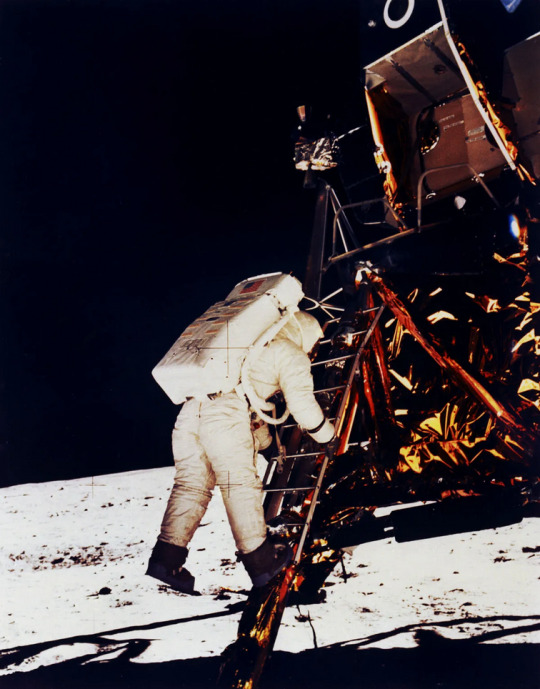
"One giant leap for mankind"
#NASA#Moon landing#Eagle#Lunar module#Neil Armstrong#Astronaut#Lunar landing#moon#spaceflight#Apollo 11#History
46 notes
·
View notes
Text
The original Moon landing sites
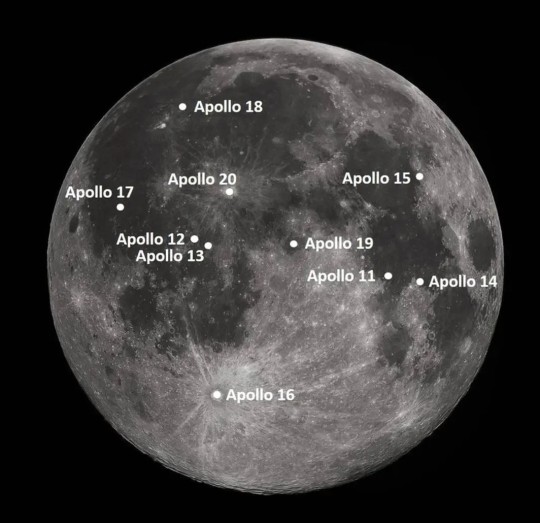
"NASA contracted to have 15 flight-worthy Saturn V rockets produced. Apollo 11 achieved the first landing with the sixth Saturn V, leaving nine for follow-on landings. The following landing sites were chosen for these missions, planned to occur at intervals of approximately four months through July 1972."
Note: I've updated this list with the original tentative planned launch dates.
G-type Mission
Apollo 11: (G) Mare Tranquillitatis, July 1969
H-type missions
Apollo 12: (H1) Ocean of Storms (Surveyor 3 site), November 1969
Apollo 13: (H2) Fra Mauro Highlands, March 1970
Apollo 14: (H3) Littrow Crater, July 1970
Apollo 15: (H4) Censorinus Crater, November 1970
J-type missions, the extended stay missions
Apollo 16: (J1) Descartes Highlands or Tycho Crater (Surveyor 7 site), April 1971
Apollo 17: (J2) Marius Hills or Marius Hills volcanic domes, September 1971
Apollo 18: (J3) Copernicus crater or Schröter's Valley or Gassendi crater, February 1972, later July 1973
Apollo 19: (J4) Hadley Rille, July 1972, later December 1973
Apollo 20: (J5) Tycho Crater or Copernicus Crater or Marius Hills, December 1972, later July 1974
As we all know, plans were changed and missions were cancelled. But it's nice to see what was initially planned.
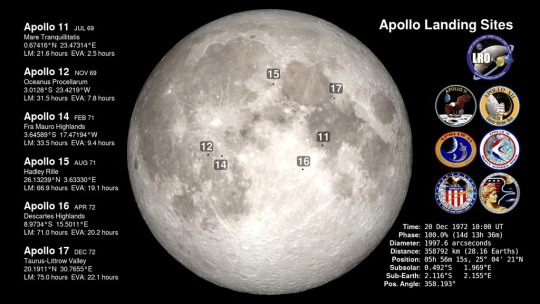
To compare with the actual landing sites and dates:
Apollo 12: (H1) Ocean of Storms (Surveyor 3 site), November 1969
Apollo 13: (H2) never landed, April 1970
Apollo 14: (H3) Fra Mauro, January-February 1971
Apollo 15: (J1) Hadley–Apennine, July-August 1971
Apollo 16: (J2) Descartes Highlands, April 1972
Apollo 17: (J3) Taurus–Littrow, December 1972
NASA ID: link, link
Information from Astronautix: link
Information from Wikipedia: link
#Apollo 11#Apollo 12#Apollo 13#Apollo 14#Apollo 15#Apollo 16#Apollo 17#Apollo 18#Apollo 19#Apollo 20#NASA#Apollo Program#Moon#Moon landing#Lunar Module#cancelled#G-type Mission#H-type mission#J-type mission#Cancelled Mission#my post
469 notes
·
View notes
Text
Beresheet's range of possible landing sites is, unsurprisingly for a modest mission, quite constrained. Were it not, it might be heading for one of the particularly intriguing magnetic anomalies that are associated with "lunar swirls", pale ribbon-like loops overlaid on the darker regolith.*
* And not just because Arthur C. Clarke used a magnetic anomaly to signal the existence of an alien artifact in Tycho in "2001: A Space Odyssey".
"The Moon: A History for the Future" - Oliver Morton
#book quotes#the moon#oliver morton#nonfiction#beresheet#lunar module#moon landing#landing site#constrained#magnetic#anomaly#intriguing#regolith#arthur c clarke#alien#artifact#tycho#2001 a space odyssey
0 notes
Text
sometimes in a brief bout of peace I finally beat the apollo allegations but it's by raising worse klavier ones (bren said recently that I was like if one of the members of a lab grown-in-tubes Sev'ral Times esc. boy band got separated from his fellow boy band members at birth and that is only way to explain how I am the way I am)
#💥.txt#and the clay ones.............#stereotypical best friend character sometimes (delightful thing to be so it's okay)#my grandpa worked on the lunar landing module for apollo 11 and my birthday is on nasa's founding date#I was an astronomy kid in middle school.... devastating#those ones are alarming truly clay may be on my trail
1 note
·
View note

